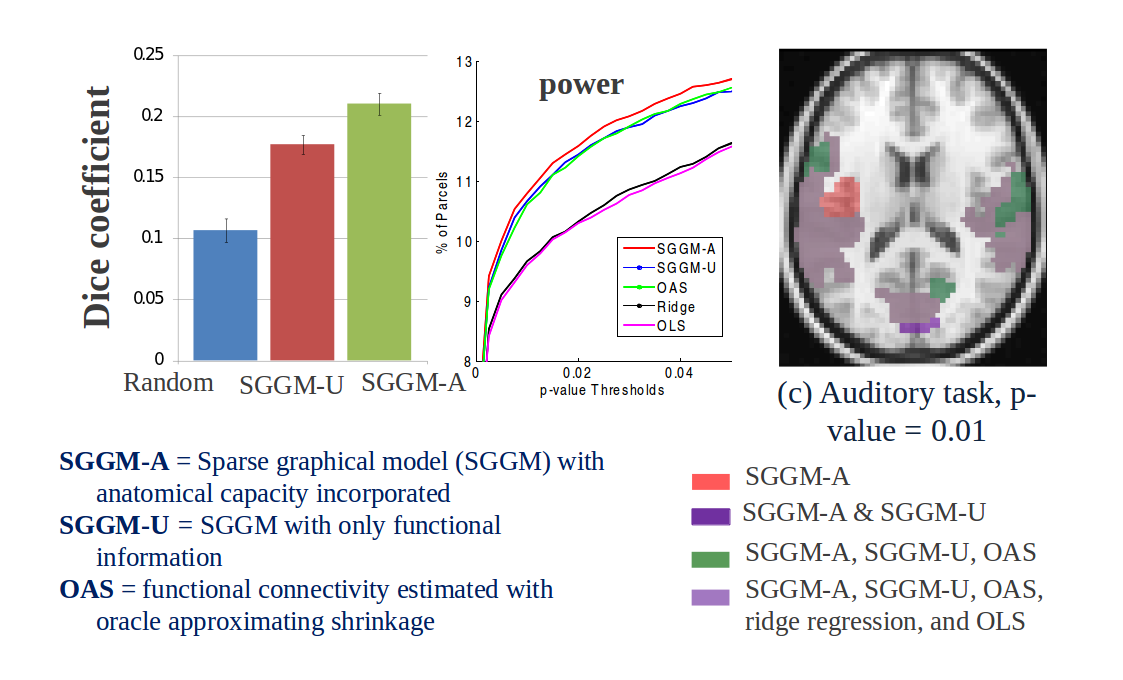Section: New Results
A Novel Sparse Graphical Approach for Multimodal Brain Connectivity Inference
Participants : Bertrand Thirion, Jean-Baptiste Poline, Gaël Varoquaux [Correspondant] , Bernard Ng.
Despite the clear potential benefits of combining fMRI and diffusion MRI in learning the neural pathways that underlie brain functions, little methodological progress has been made in this direction. In this work, we propose a novel multimodal integration approach based on sparse Gaussian graphical model for estimating brain connectivity. Casting functional connectivity estimation as a sparse inverse covariance learning problem, we adapt the level of sparse penalization on each connection based on its anatomical capacity for functional interactions. Functional connections with little anatomical support are thus more heavily penalized. For validation, we showed on real data collected from a cohort of 60 subjects that additionally modeling anatomical capacity significantly increases subject consistency in the detected connection patterns. Moreover, we demonstrated that incorporating a connectivity prior learned with our multimodal connectivity estimation approach improves activation detection.
|
More details can be found in [26] .



